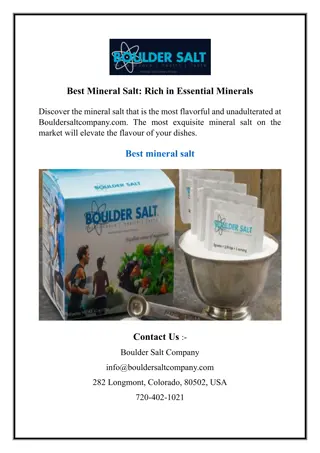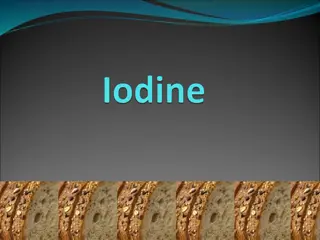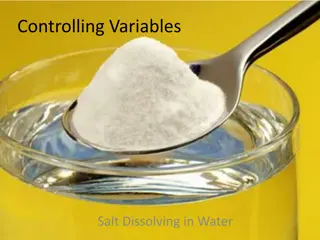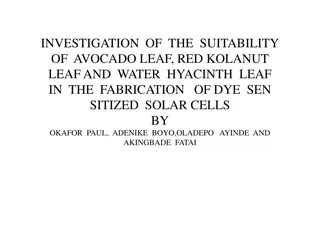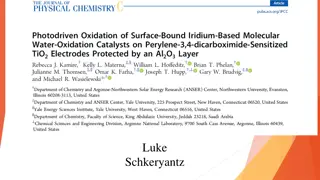Preparation of Azo Dye from Diazonium Salt: Theoretical Overview
In this experiment-related content, the preparation process of azo dye from diazonium salt is discussed. It covers the theoretical aspects of amines, their basicity, nomenclature, and reactions with nitrous acid. Primary, secondary, and tertiary amines' reactions, along with the formation and reactions of diazonium salts, are explored. The stability of aromatic diazonium salts compared to aliphatic ones is highlighted, emphasizing the significance of the reactions in organic chemistry.
Uploaded on Apr 19, 2025 | 1 Views
Download Presentation

Please find below an Image/Link to download the presentation.
The content on the website is provided AS IS for your information and personal use only. It may not be sold, licensed, or shared on other websites without obtaining consent from the author.If you encounter any issues during the download, it is possible that the publisher has removed the file from their server.
You are allowed to download the files provided on this website for personal or commercial use, subject to the condition that they are used lawfully. All files are the property of their respective owners.
The content on the website is provided AS IS for your information and personal use only. It may not be sold, licensed, or shared on other websites without obtaining consent from the author.
E N D
Presentation Transcript
Second Semester Experiment 1 Preparation of Azo dye from diazonium salt Theoretical part: Amines : Are organic compounds that show appreciable basicity ,the general formula RNH2 , R2NH , or R3N , where R is any alkyl or aryl group. Amines are classified as primary, secondary, or tertiary according to the number of groups are attached to the nitrogen atom.
Nomenclature: amines are named by naming the alkyl group or groups attached to nitrogen , and following these by the word amine .
Amines are react with nitrous acid (HONO)to yields a different kind of product, HONO prepare by the action of mineral acid on sodium nitrite .Primary amines react with nitrous acid to yield diazonium salt .
Secondary amines , both aliphatic and aromatic reacted with nitrous acid to yield N-nitrosoamines.
Tertiary aromatic amines undergo ring substitution, to yield compounds in which a nitroso group , -N=O is joined to carbon in p- position .
Primary aromatic amines react with nitrous acid to yield diazonium salt , this is one of the most important reactions in organic chemistry . aromatic diazonium salt is more stable than aliphatic diazonium salt .
diazonium salt reaction : when primary aromatic amine is dissolved or suspend in cold aqueous mineral acid & treated with sodium nitrite , there is formed a diazonium salt
diazonium salt slowly decomposes even at ice-bath temperatures , the solution is used immediately after preparation . There are large numbers of reaction undergo by diazonium salts may be divided in two types:
1.Replacement reaction: in which nitrogen is lost as N2 , and some other atom or group becomes attached to the ring in its place .
2.Coupling reaction : in which the nitrogen in diazonium salt is retained in the product .
Experimental part: 1. (1ml) of aniline was dissolved in (5ml) of concentrated hydrochloric acid and (5ml) of water, in a small beaker . 2. (0.8g) of sodium nitrite in (4ml) of water was added to the mixturein step 1 .The mixture was kept in ice bath (0-5oC). 3. (1.6g) of 2-naphthol in (9ml) of (10%) percent sodium hydroxide (aq.),was kept in ice bath too. 4. The Coled mixture in step 2 was added slowly to Naphthol solution. 5. A red color. Develops and red crystals of 1-phenyl-azo-2-naphthol separated. 6. After the completion of addition the mixture was kept in ice bath for (30min) with occasional stirring 7. The precipitate was filtered through Buchner funnel washed with water and dried. 8. The precipitated dye was weighed to calculate the percentage yield.





